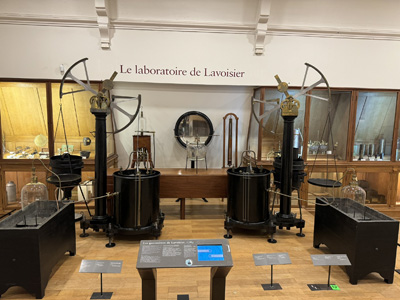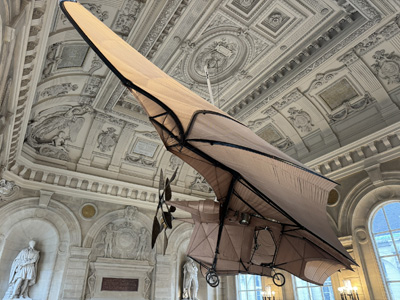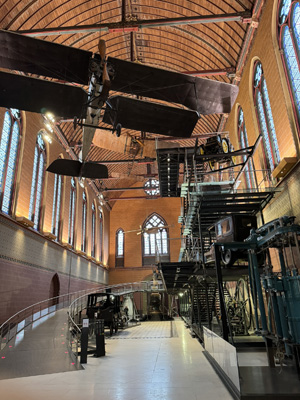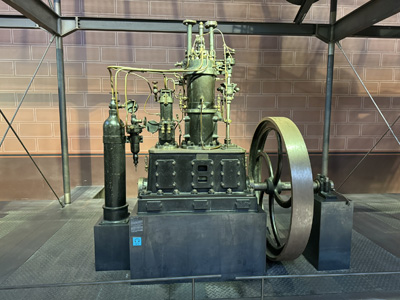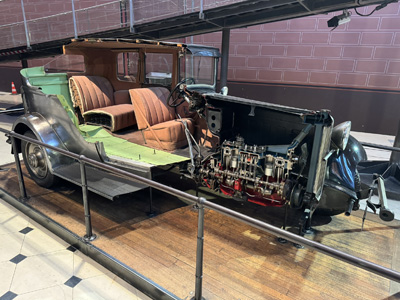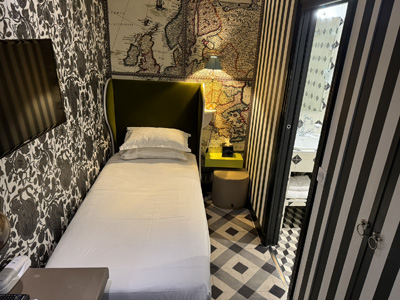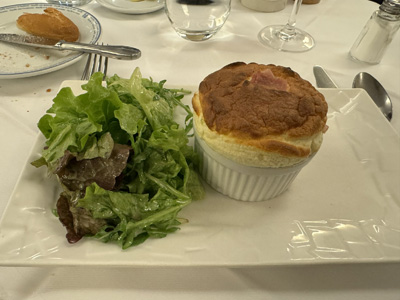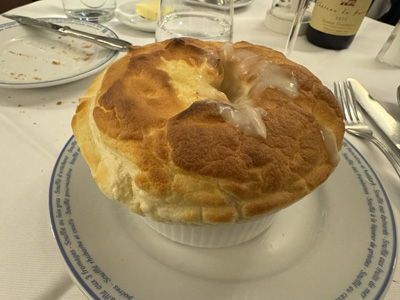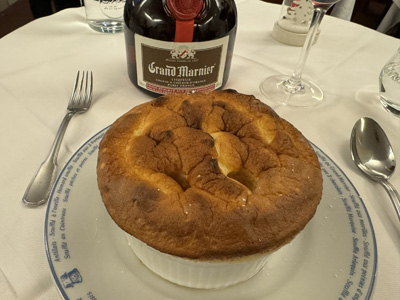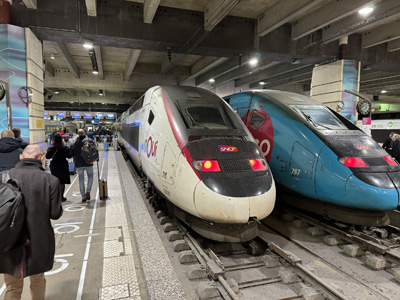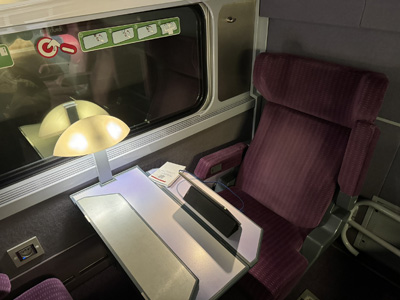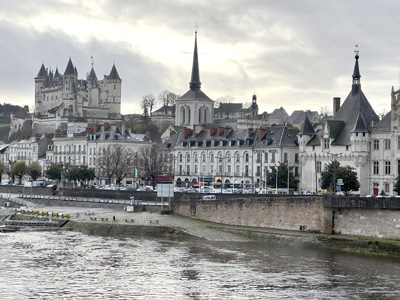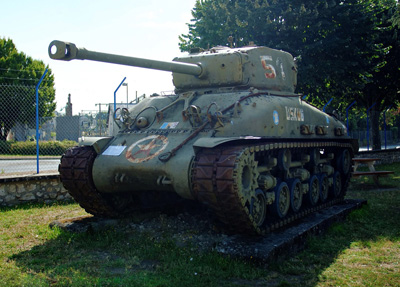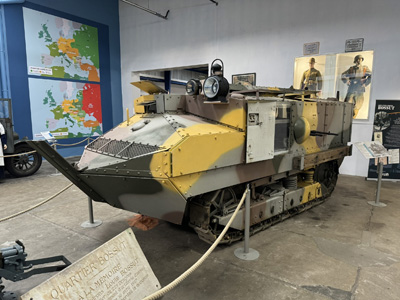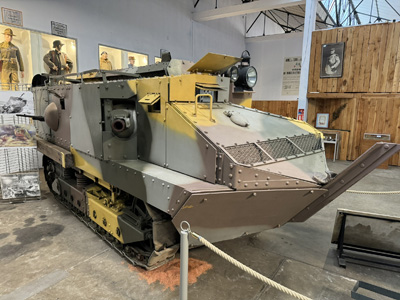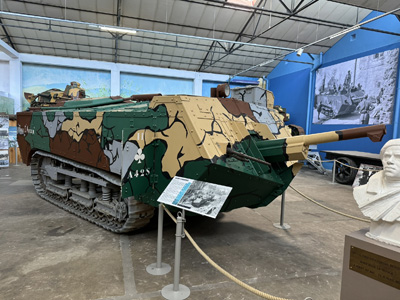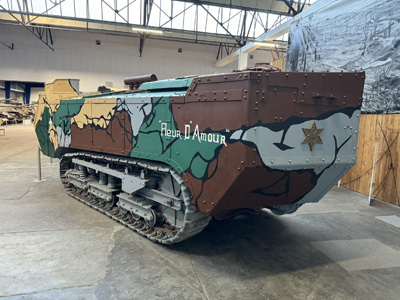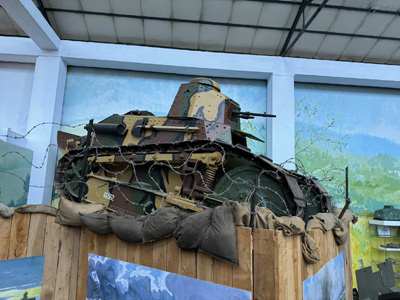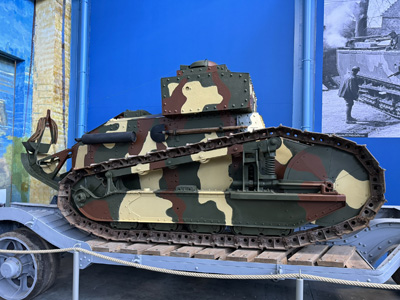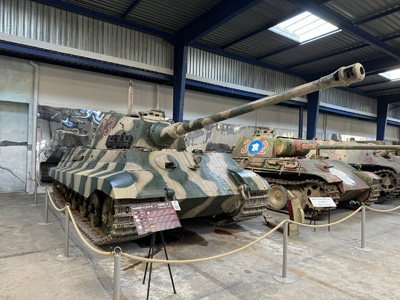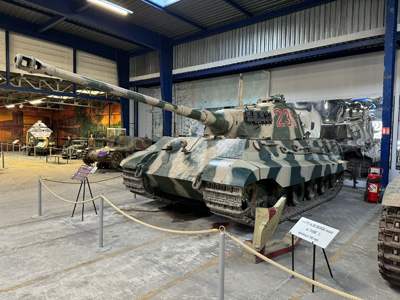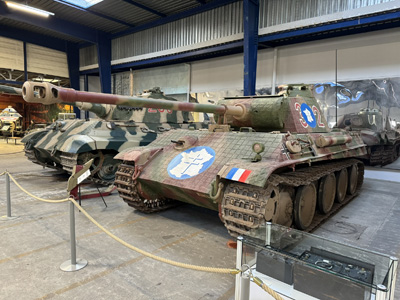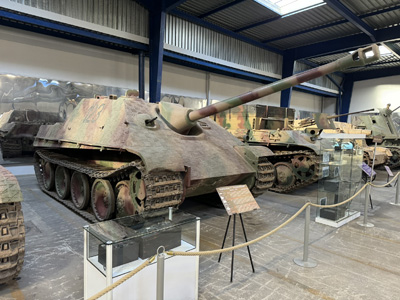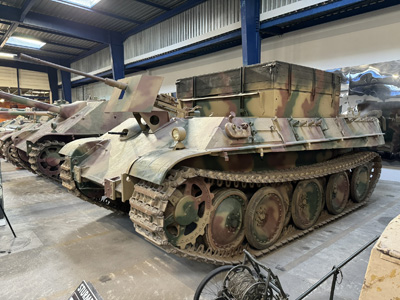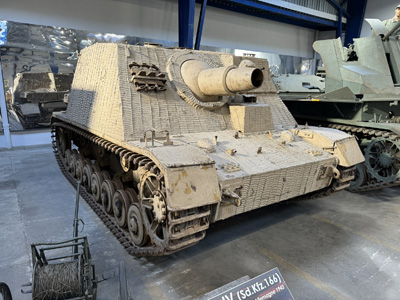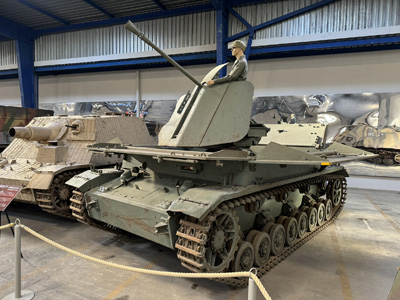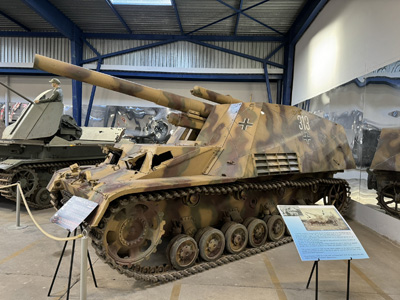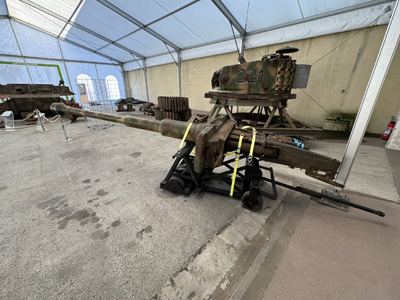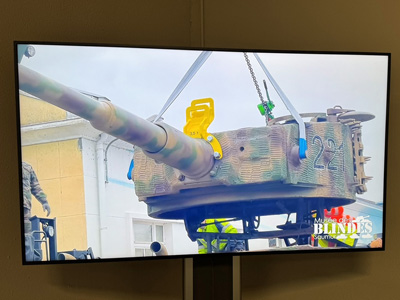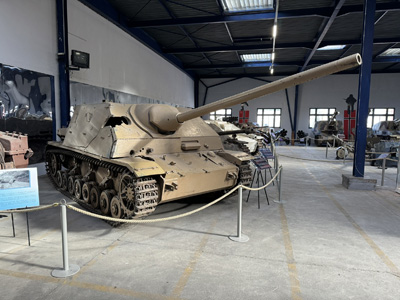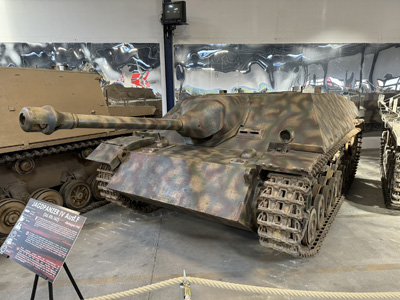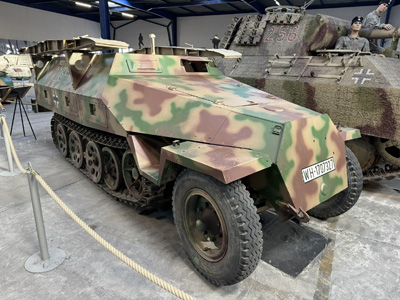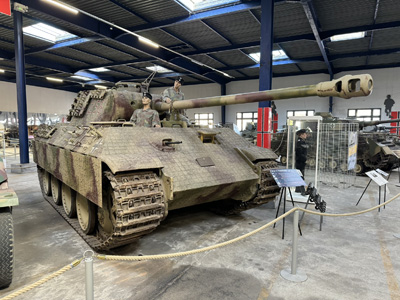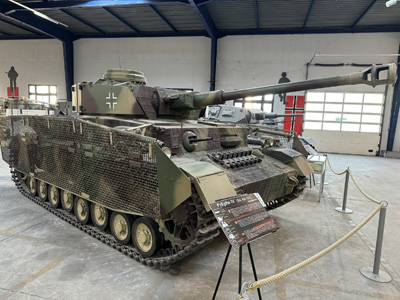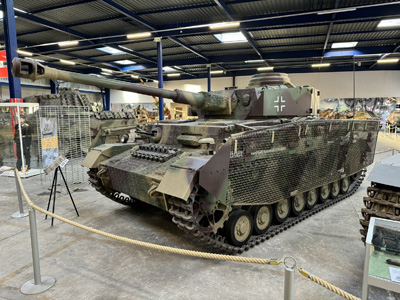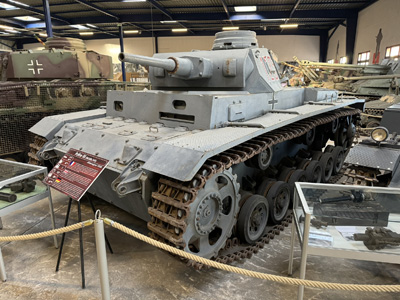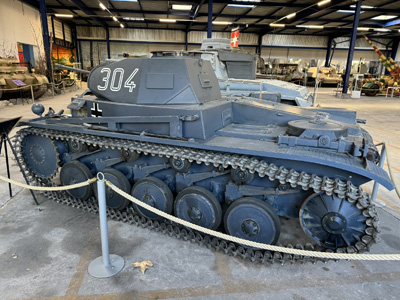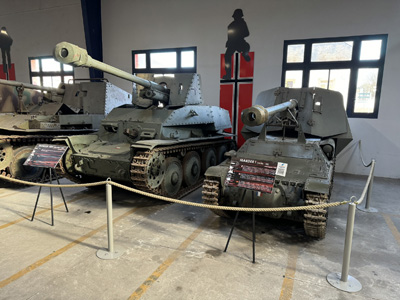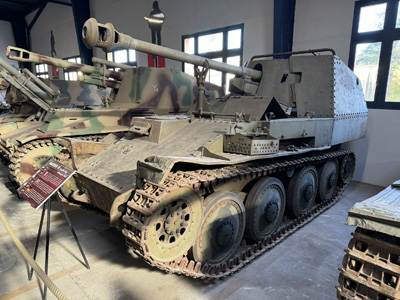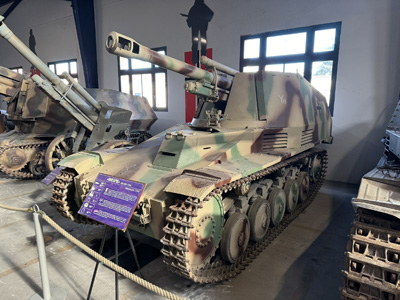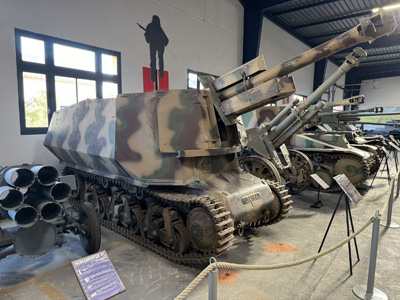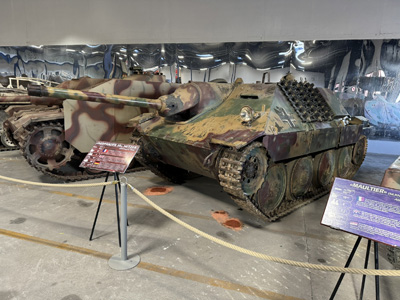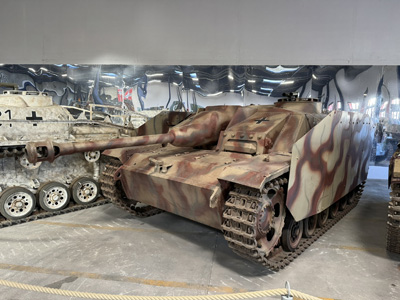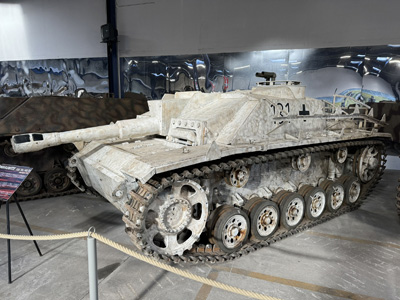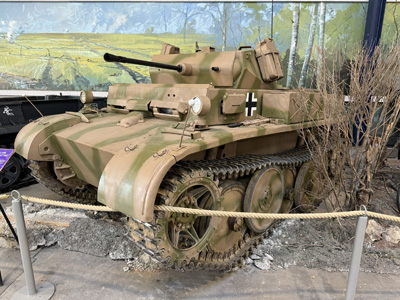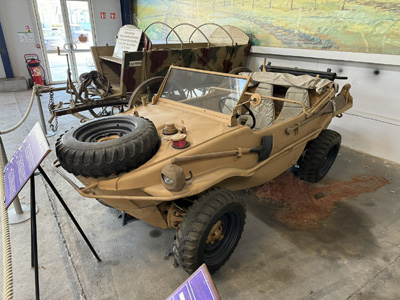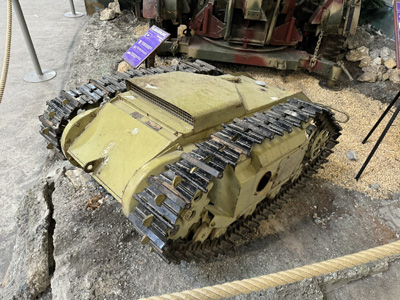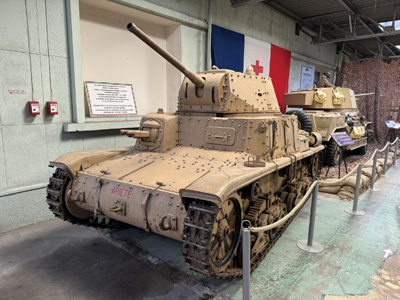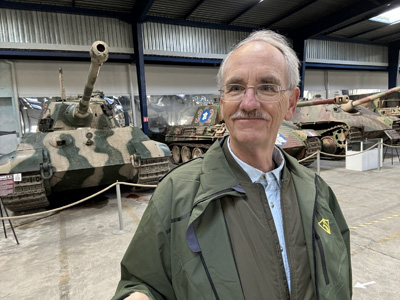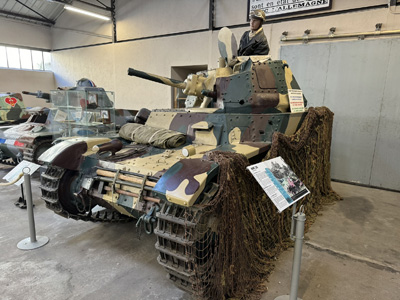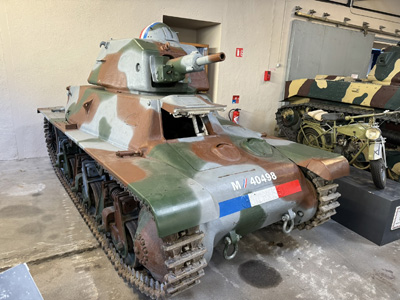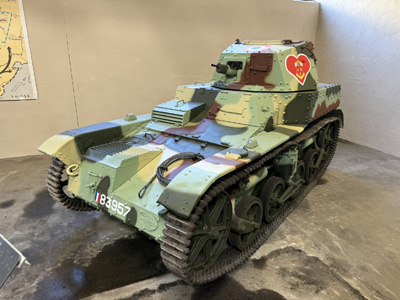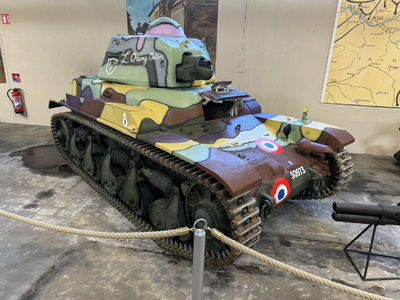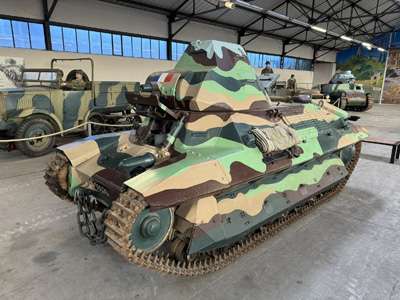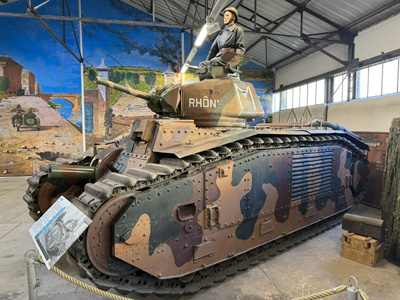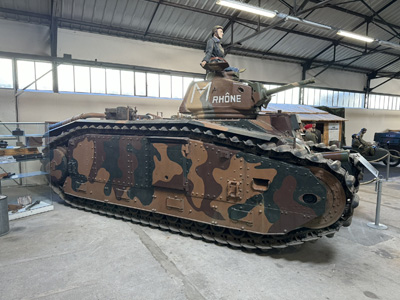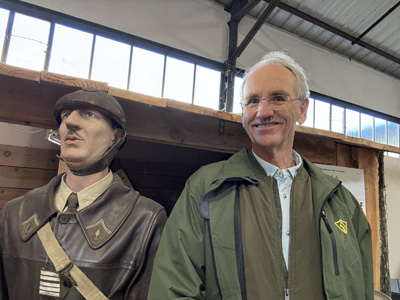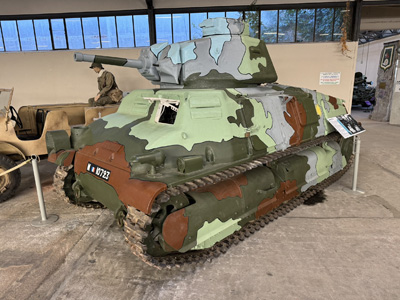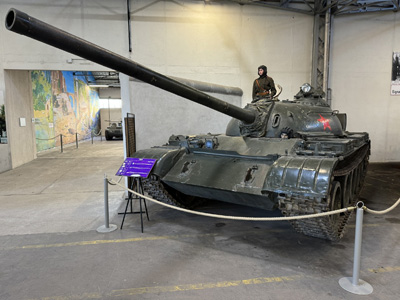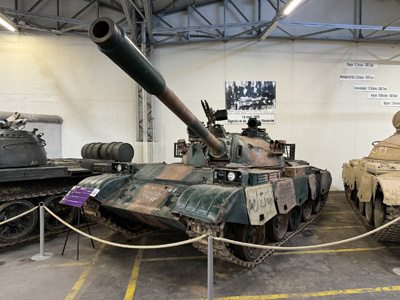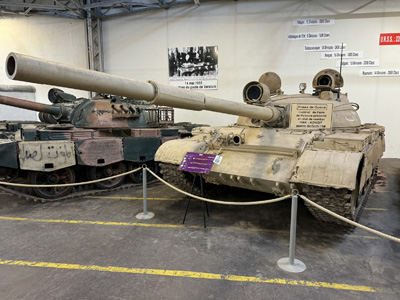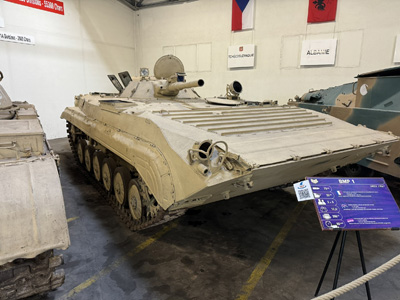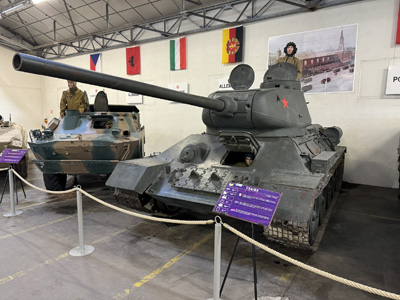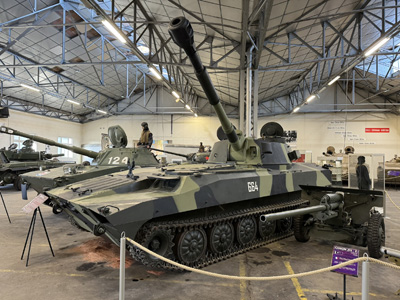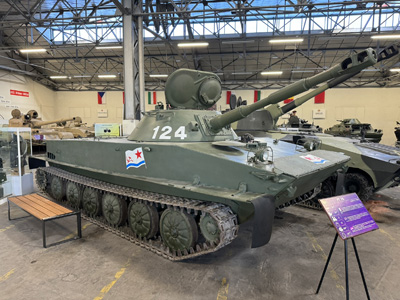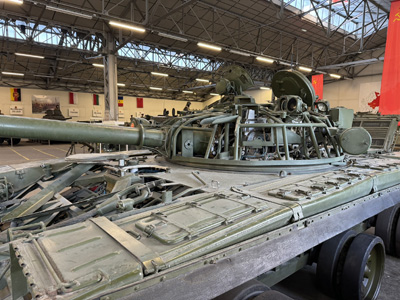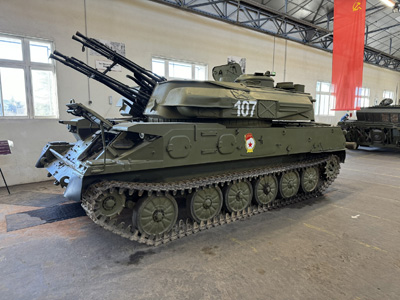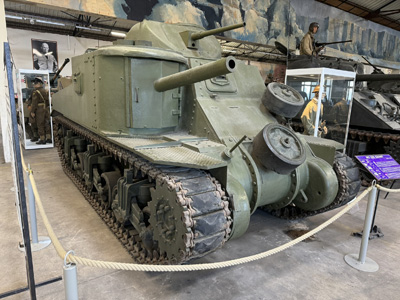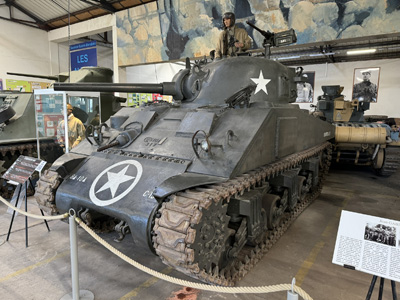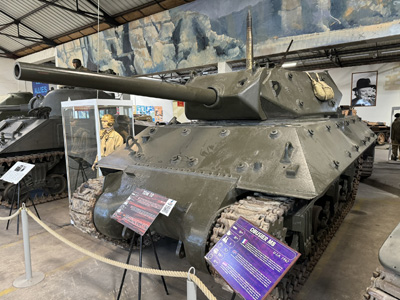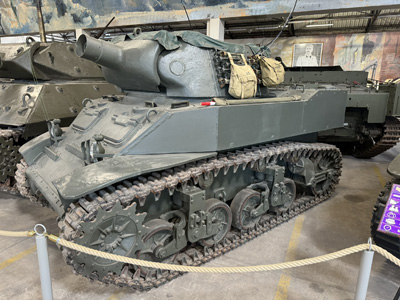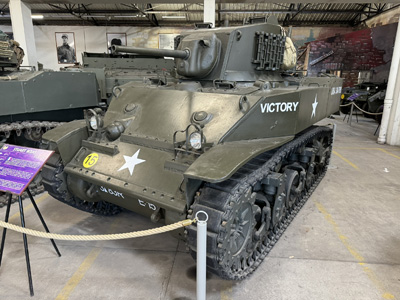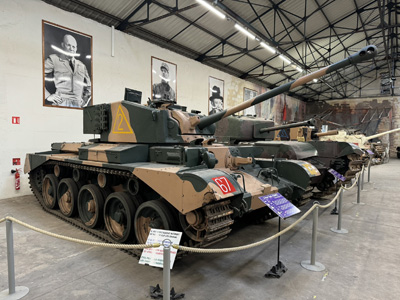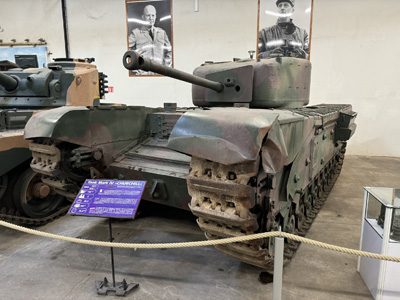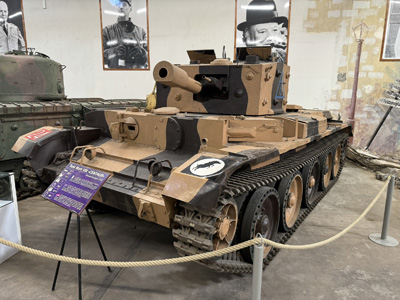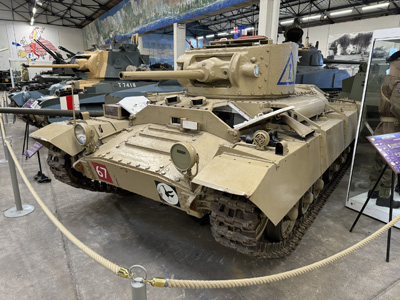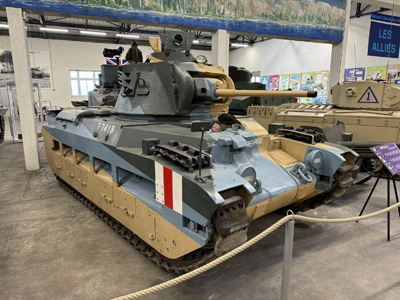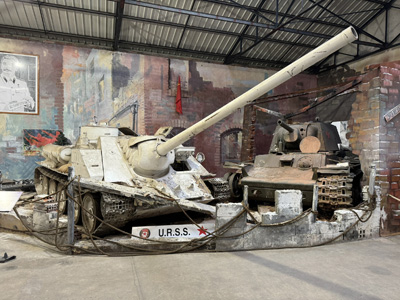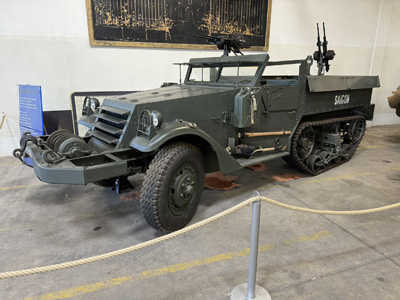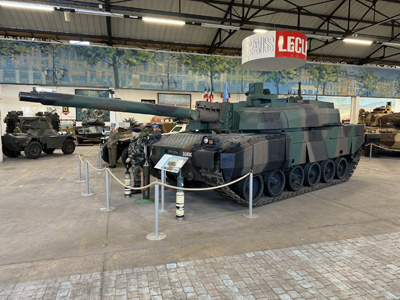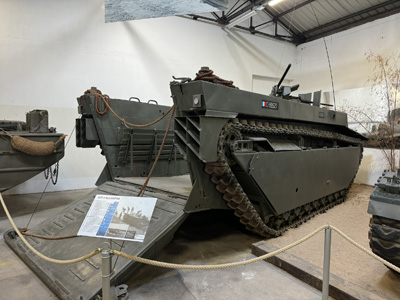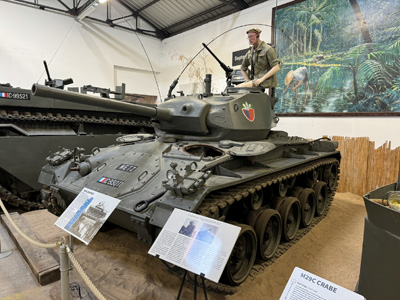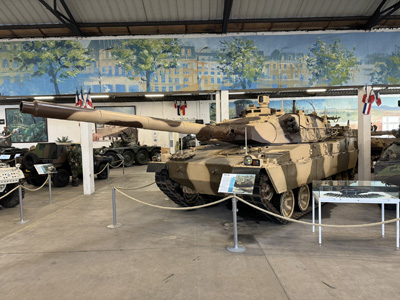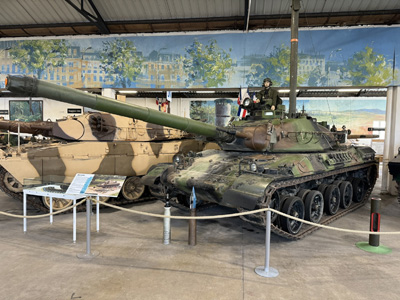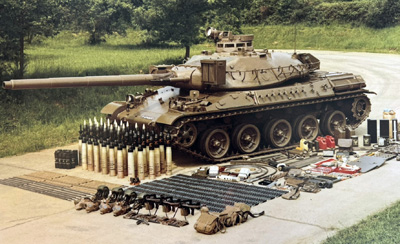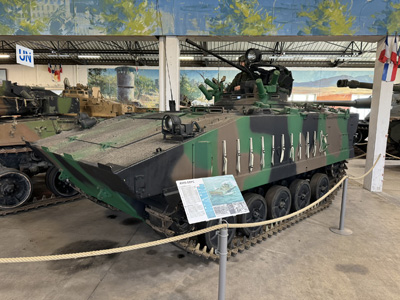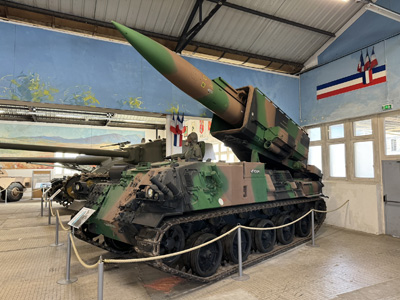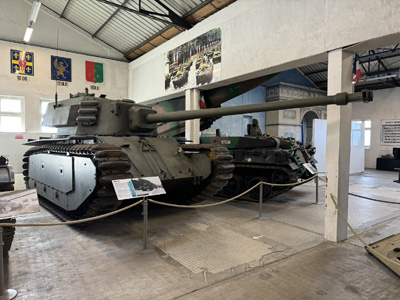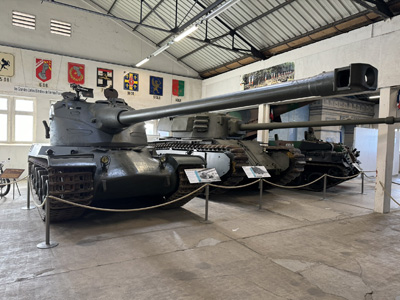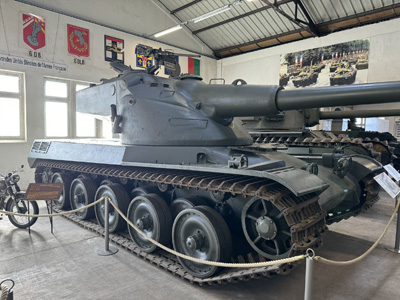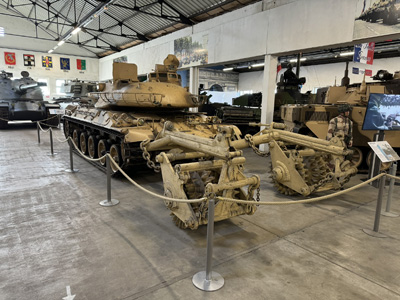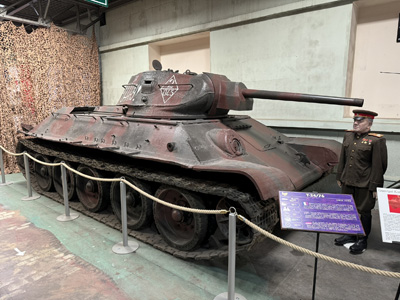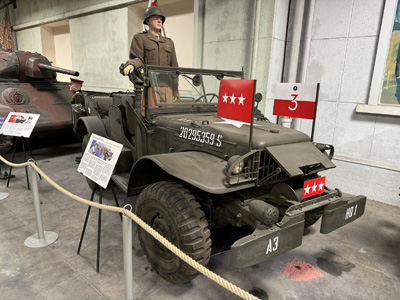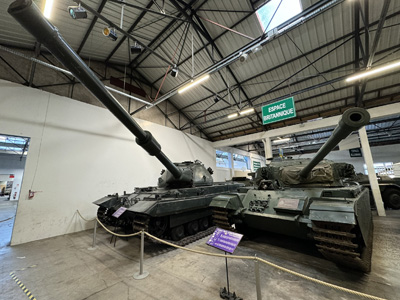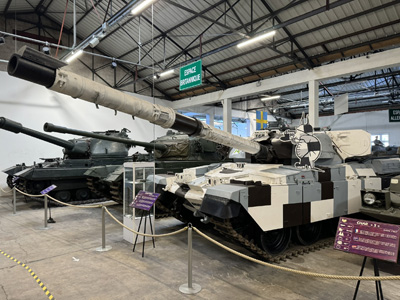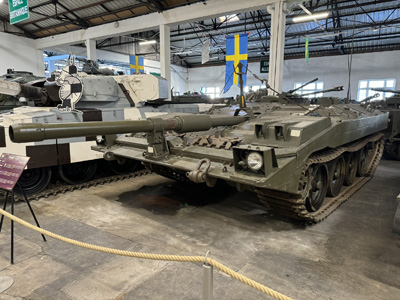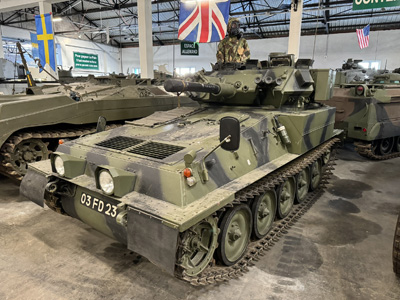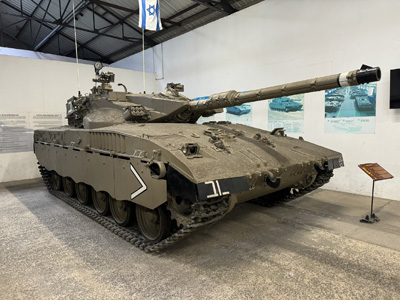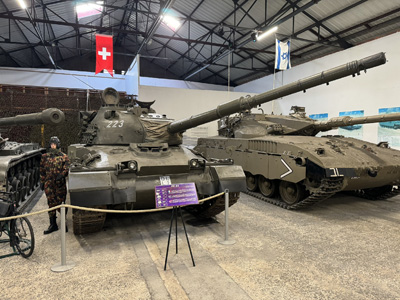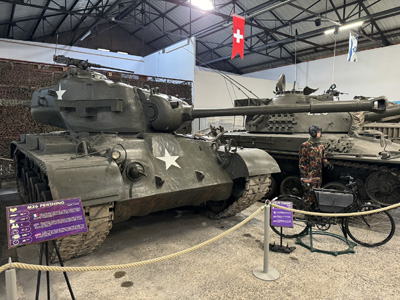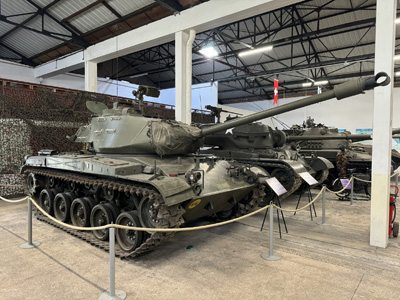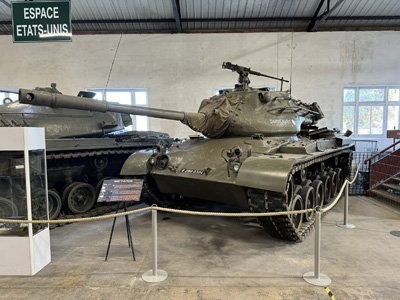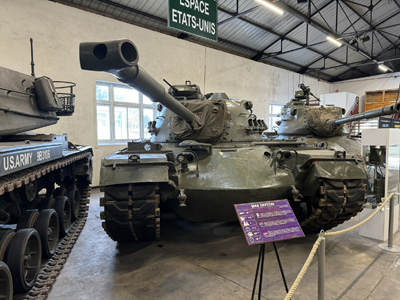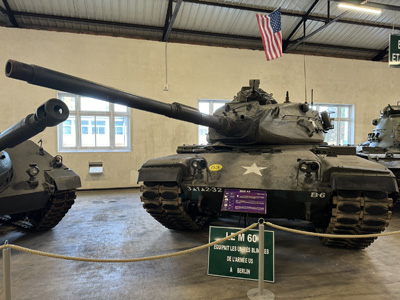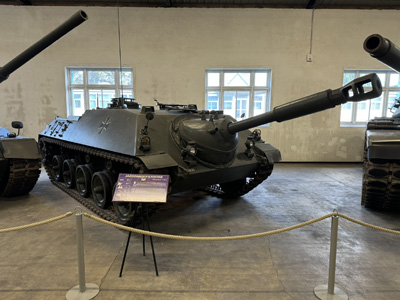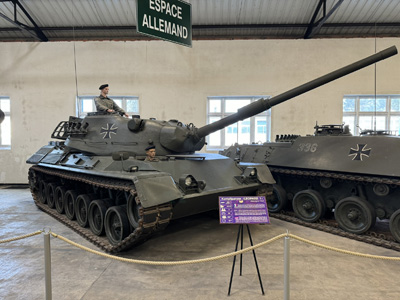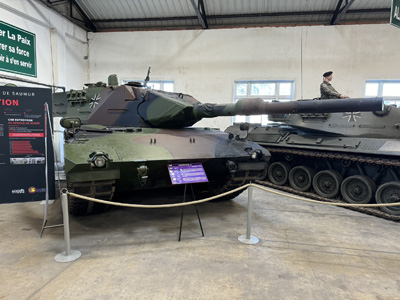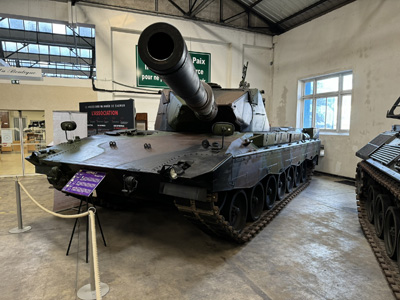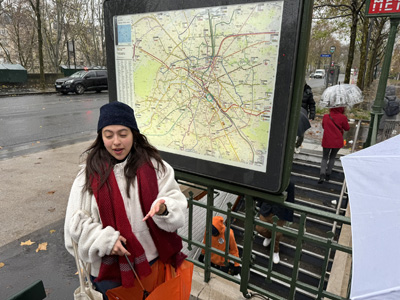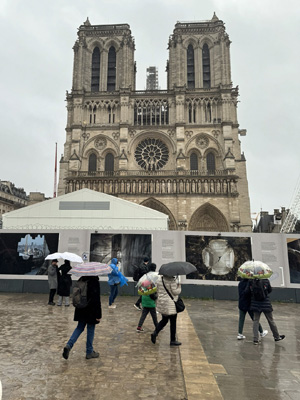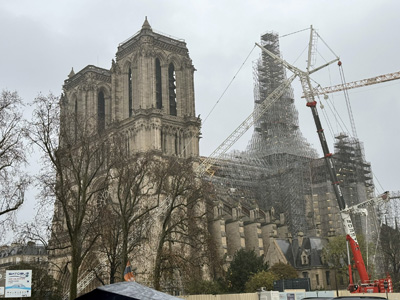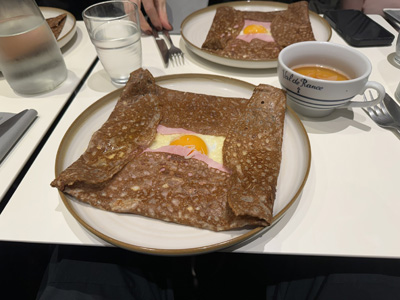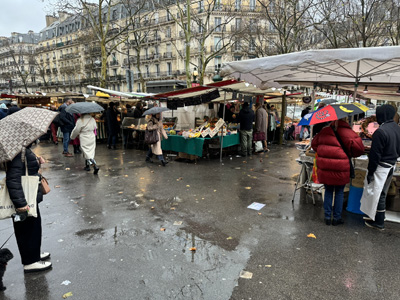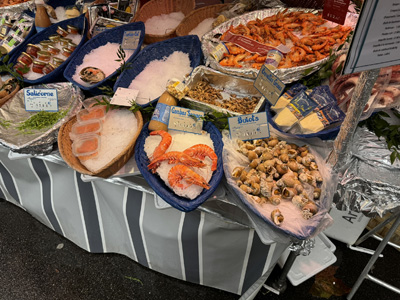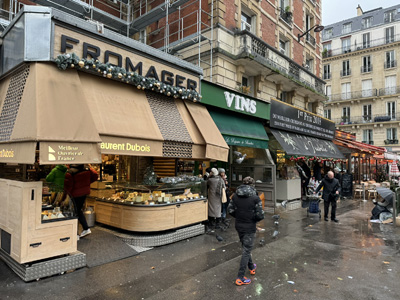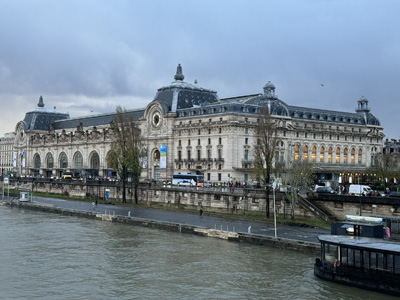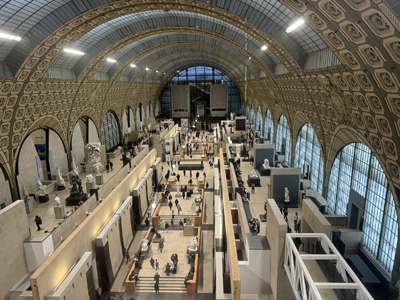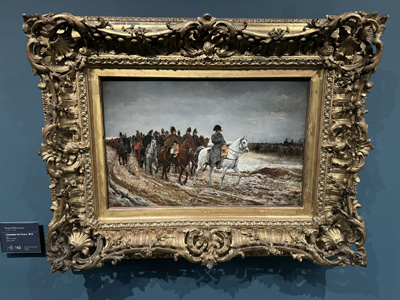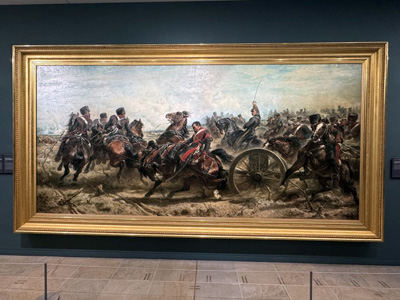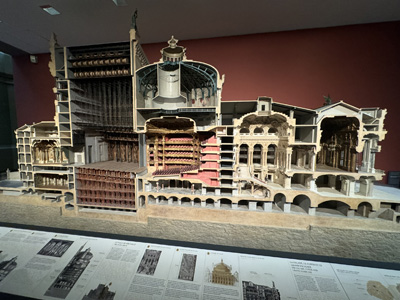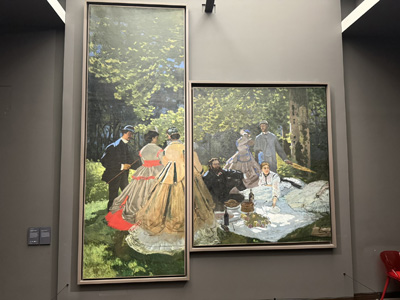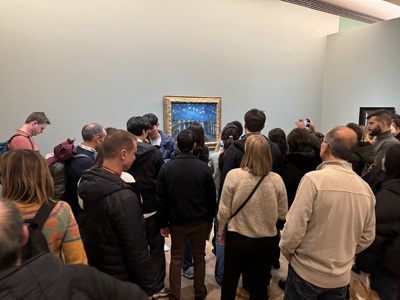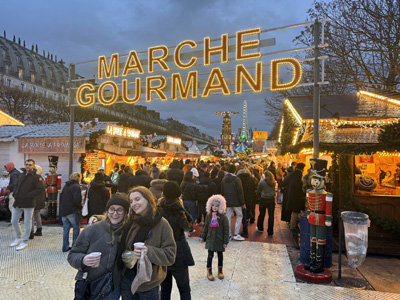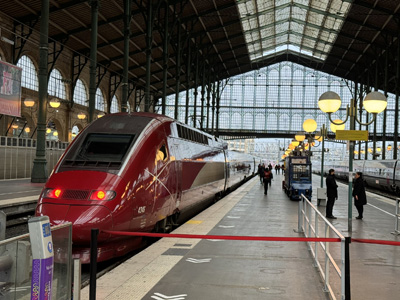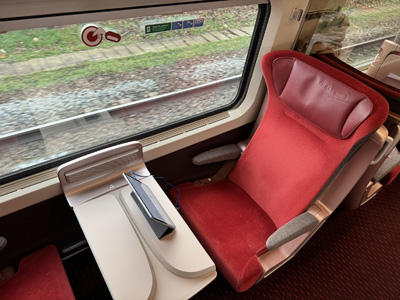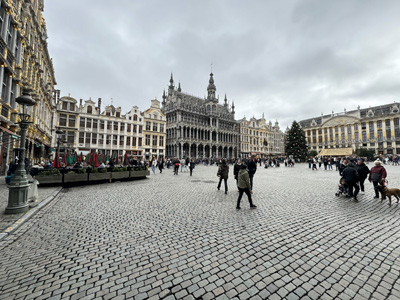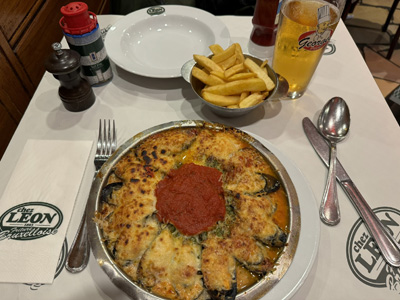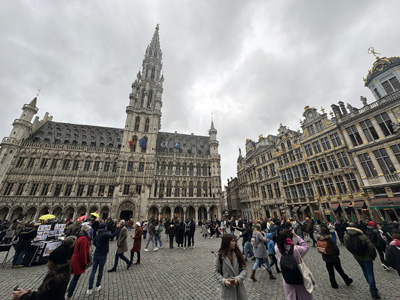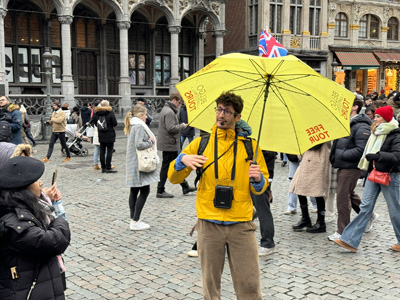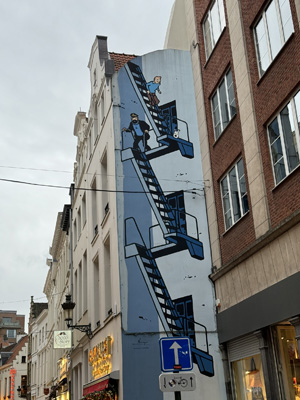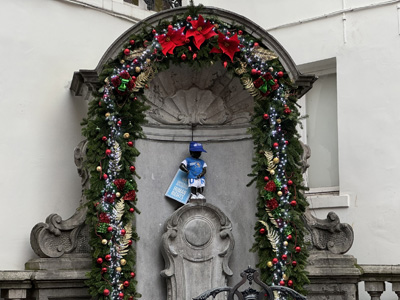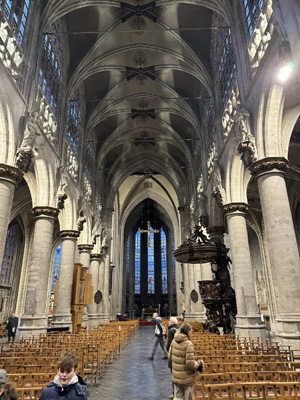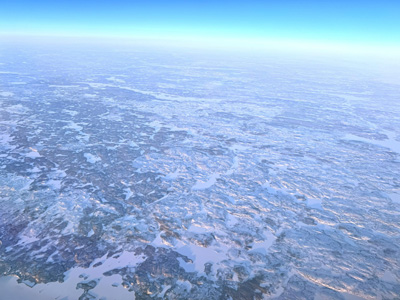Hal Jespersen's Battle of the Bulge Tour, December 2023
This is my (Hal‘s) report on my trip to Belgium and Luxemburg for a tour of the Battle of the Bulge, hosted by Stephen Ambrose Historical Tours. (And there is also some traveling in France before the start of the Ambrose tour.) It is my fourth tour with Ambrose, the first being the 75th anniversary of D-Day in 2019, followed by Patton’s advance across France and Belgium to Germany, then the Italian Campaign from Sicily to Rome in 2022, and then most recently, the World War I Western Front in November. Because this report is so large I have broken it into three parts.
Contents – Part 1
→ Part 2: Northern Shoulder (Peiper, St. Vith, Spa, Belgium)
→ Part 3: Southern Shoulder (Bastogne, Diekirch, Luxembourg)
Thursday, December 7 — Paris
I flew United Airlines on Wednesday afternoon, arriving at Charles de Gaulle at about 10 AM. A good flight, delayed a bit because of unusual weather at SFO, which bollixed up the entire airport. I sailed through CDG immigration and customs in nothing flat. I arranged a pick up from a company called Welcome Pickups, which I had not been familiar with, but was recommended by my hotel in Paris. It turned out they also have service at SFO, so I used them on both ends of the trip and was happy with them. It is a bit more expensive than Uber, but there is none of the uncertainty scheduling pickups at a guaranteed time or trying to figure out where to find the pickup points at an airport.
While I waited for my hotel room to be available I walked over to the Musée des Arts et Métiers, about 1.75 miles. I recently read a fascinating biography of Rudolph Diesel, who lived in Paris, and his historic diesel engine prototype is on display there. The museum has lots of scientific instruments, and industrial machinery, both real and models, as well as computers, vehicles, and even a special exhibition on Exploring Antarctica. The best I can say is it was moderately interesting. Many of the signs are only in French, but the Google Translate app in camera mode was a useful go-between. I happened to arrive just as three large groups of small school children paraded in, but I was fortunate in that their stay was very short and not too disruptive.
I returned via metro to the Hotel du Continent, which is quite modest, near Place Vendôme and the Tuileries. It seems comfortable enough, but the room is probably the smallest I have ever encountered outside of Japan. I had dinner at a restaurant down the block, Le Soufflé, a delicious fixed price menu of a ham and cheese soufflé with a salad, a Henri IV soufflé (chicken and mushrooms, which I selected for the dubious reason that my actual name is Henry IV), and a Grand Marnier soufflé. My wine was a preview of tomorrow’s trip to the Loire Valley—a Saumur-Champigny red.
Friday, December 8 — Saumur
The day got off to a bad start when my anti-jet lag routine failed and I woke up at 1:30, unable to get back to sleep. Then there was no hot water in the miniature shower. I took the Metro to Gare Montparnasse for an early train to Saumur, about 200 miles west. It was interesting (?) to see a squad of police brandishing automatic weapons grouped outside the cafe where I got a latte. The first leg of the trip was a TGV to Angers, which was very comfortable in first class, although these high-speed trains sway back and forth, like an airplane in constant turbulence, which leaves me a little queasy. I watched a movie on my iPad, the 1965 Battle of the Bulge (Henry Fonda and Robert Shaw), which is a ludicrously bad depiction of the battle. I transferred to another train for the final 20-minute leg to Saumur.
I did quite a bit of walking today. Since the weather was good, I hiked 2.2 miles from the Saumur train station, crossing two bridges over the Loire, to the Musee des Blindés (armored vehicles). This is a really excellent museum, with many dozens of tanks and other vehicles from WWI, WWII, the Cold War, and modern times. All the major western countries and the Soviet Union are represented. The signage is mostly tri-lingual and gives lots of details. There weren’t many surprises, but there were a few experimental or otherwise obscure choices, as you will see from my photos. (There are a lot here, but I did cull them by omitting most field guns and non-tracked vehicles.) As might be suspected, French tanks are comprehensively represented. I particularly took to the Leclerc, which is a massive, evil-looking tank. On a few signs, tanks from Britain and the US snarkingly point out that they are similar in design to various French models that preceded them. I also liked a short film about the first WWI battle fought by French tanks, April 16, 1917, at Berry-au-Bac, near Chemin des Dames. (I recently visited a monument to this action on my WWI tour.) It had a lot of tank video footage that I hadn’t seen before. One more plus: the gift shop has more model kits in one place than I have ever seen.
I put copies of all of the informational signs represented by these photos in a large PDF.
More walking—Uber had no drivers available and the museum lady was unable to find a taxi willing to pick me up, so another 2.2 miles afoot. I intended to spend a full day in Saumur, but the calendar betrayed me. The famous cavalry museum downtown is closed during the winter, which came as a surprise to me, and the big chateau on the hill overlooking the river is closed as well. So I took a late afternoon train back, stopping at St-Pierre-des-Corps, a close-in suburb of Tours, where I enjoyed a glass of Chinon, a local red. The TGV back to Montparnasse was a quick hour ride. The station was teeming with enormous crowds, people practically shoulder to shoulder while a quarter of them were frantically racing with roller bags. After returning to the hotel, I walked around the city streets for a while, admiring some very elaborate Christmas decorations, and settled on a brasserie called Café Madeleine, where I had a Croque Monsieur avec frites. Nothing special, but after a very long day I was not looking for the ultimate in gastronomy.
Saturday, December 9 — Paris
I got to sleep in a bit and left on a food adventure. I took two Metros to the Pont Marie station and met a small group for a foodie tour of the Notre Dame area. Our guide was Luisa, a young, articulate, and enthusiastic woman. Our walking tour, mostly in the rain, spanned the two islands in the Seine and the Latin Quarter. We started at one of the shops owned by Pierre Hermé, the so-called Picasso of macarons, who specializes in unusual flavor combinations for these fabulous cookies. They had a couple of dozen flavors on hand and I went out on a limb and tried the curry, which was OK, a little dry, actually. Next was a restaurant, Le Galardine, that specializes in galettes, which are like crêpes, but made from buckwheat. I chose the traditional Brittany variety, which was made with ham, cheese, and a fried egg. Very delicious. We also had a cup of Brittany cider. Then we roamed around the Marché Maubert in the Latin Quarter, admiring the stalls selling attractive produce, seafood, meats, and all sorts of edibles, while Luisa shopped in a few of the neighboring stores for cheese and bread. She passed out small pastries called financiers, which I found to be somewhat like Madeleines, but made with ground almonds. She told us an interesting tidbit: in France, unlike the United States, companies are not allowed to market their products as “the best” unless they have documentary evidence from a formal competition. A few of the shops here had such documents, such as the best croissant in a 2018 contest. (One of the ladies on the tour bought some of them and said that they were in fact the best ones she had ever had.)
We adjourned to Luisa‘s “secret spot,” which is a former restaurant that the food tour company must be renting, an empty room with just tables and chairs. Here we got out of the rain and enjoyed a number of courses, including two traditional breads, two salads of carrots and coleslaw, a quiche Lorraine (which Louisa revealed actually has a Germanic origin, and the French picked it up after the German occupation of Lorraine in the 1870s), a strongly delicious lemon tart, and three cheeses. The cheeses were a Compté (like a Parmigiana Reggiano), some soft cheese whose name escapes me with golden raisins, and a delicious goat bleu that was interleaved with layers of jam made from pears, cranberries, and white wine.
Saying goodbye to my little group of gourmands (all six of us Americans), I walked about a mile and a half to the Musee d’Orsay. I had pre-booked a specific entry time ticket, but had to wait about 20 minutes in line before someone even looked at it. The place was completely packed, with lines of hundreds of people out the door in the light rain, all of those who had not pre-booked. Inside it was quite a madhouse, but given the fabulous architecture and collection of paintings, it’s pretty well worth it. It’s all quite overwhelming because there are so many wonderful impressionist works, including lots of van Gogh, Gaugin, Renoir, Monet, Manet, etc. Unlike the tank museum, I did not attempt to take many photographs, except for a few that stood out, but in my view it’s certainly the best museum in Paris.
I concluded with another modest dinner in a brasserie called Le Florentin, sampling their onion soup (one of the best I’ve ever had) and some sausages (not so much).
Sunday, December 9 — Brussels
I took the Eurostar train from Gare du Nord to Brussels Midi. Unlike the journey I took recently from London to Brussels, there were no security screenings, passport control, or special waiting areas. I went first class this time and the seat was very comfortable in a lightly filled car. The trip was about 80 minutes and at one point we were going 295 km/hr, once we were in the open countryside. I chose a hotel near the station, the Mercure, which is nice hotel inside, but in a sketchy neighborhood. My plan for the afternoon was a beer tasting tour, but the tour vendor canceled at the last minute, so I had to improvise and found a walking tour to substitute (for the bargain price of $3.27 plus a mandatory tip at the end). Before the tour I walked to the Grand Place and ate at my favorite Brussels restaurant, Chez Leon, for moules et frites. (It’s my favorite because I remember eating here 45 years ago.)
The tour was led by Paolo and was quite good, primarily oriented toward history. He told us about the early founding of Brussels (before Christ), and all of the buildings on the Grand Place, including the guild houses and the oddly unsymmetrical town hall. We walked over to the Manneken Pis, the fountain/statue of a small boy peeing, which by tradition is loved by the Belgians and is adorned with over 1100 rotating costumes. Today he seemed to be a baseball player. Paolo whispered to us that this is actually a replica, although he did not elaborate. He did say that residents safeguarded the statue during the Nazi occupation. He told us the story of Tin-tin, whose cartoonist was a Nazi collaborator, who was released from prison due to a public outcry and demand for more of the story. We walked through the Sablon district, which was once the rich area in the 16th century and was later the home to many immigrants during the industrial revolution, who led miserable lives in squalid conditions. We visited a giant church, Église Notre-Dame des Victoires au Sablon, which had a beautiful interior, and is characterized by a number of statues on its face that are all female. We walked through the square in front of the Palais Royal, home to a number of museums, and by the Palais de Charles de Lorraine, which was mostly destroyed by a fire. All in all an excellent two hours. Near the end, a heavy rain started and I got quite soggy on the walk back to the hotel. I had hoped to spend more time in the Grand Place area, including for dinner, but the weather did not cooperate. Instead, I ate in the hotel bar. (I made a strategic error booking a hotel close to the train station because I should have concentrated on the tourist area and used Ubers to get to and from my main transportation, particularly because of the weather.)
Go to Part 2, the start of the Ambrose tour and the Northern Shoulder.
Monday, December 18 — Paris
I did not fly out of Brussels because I got a better deal on a round-trip to Paris, so I took a train to the Brussels Midi station and transferred to the Paris CDG airport station—a TGV trip of 90 minutes with one stop. My airport hotel for one night is the Pullman, which I encountered on the previous Ambrose tour and liked it a lot, directly across the street from the inter-terminal tram station. A disappointing development: I found out about a large pro-immigration protest scheduled for central Paris, which was “severely” delaying rail service from the airport and the authorities were recommending people not to travel. I had planned to take the train in to visit the Army museum at Les Invalides, and then find a brasserie in the Latin Quarter for dinner, but instead I wandered around the three CDG terminals looking for dinner materials while my room was being readied and then spent the rest of the day in the hotel. Sigh.
Tuesday, December 19 — Home
My flight back to SFO was about 90 minutes late. I found Terminal 1 to be rather confusing, but the Star Alliance lounge was very nice and I violated my intermittent fasting regime to eat a delicious bacon sandwich. It’s good to be home after a busy fall traveling.
